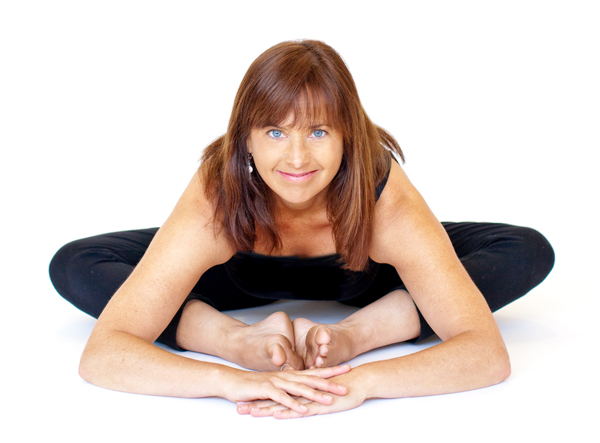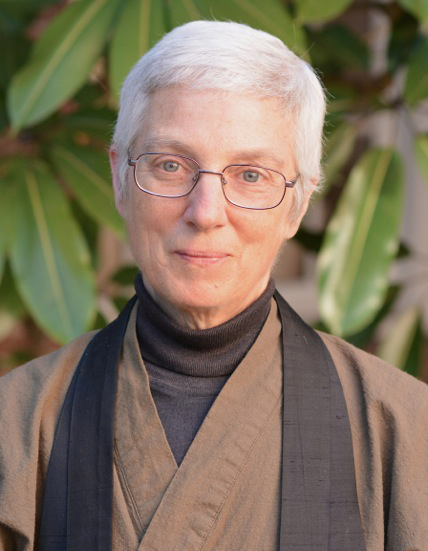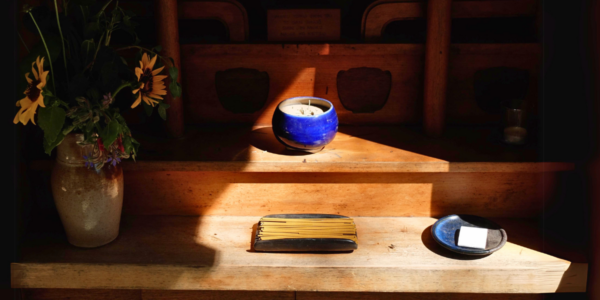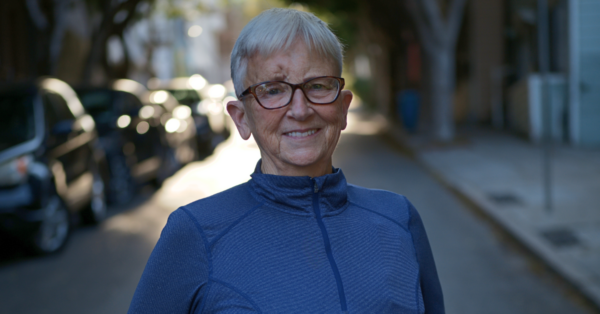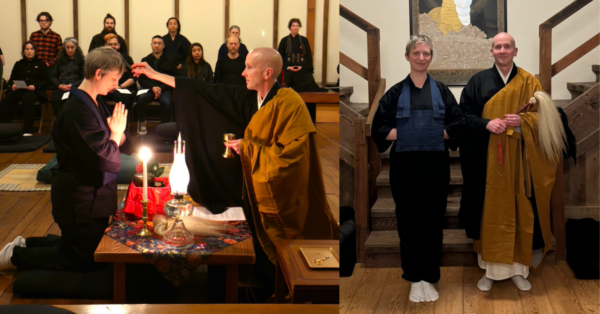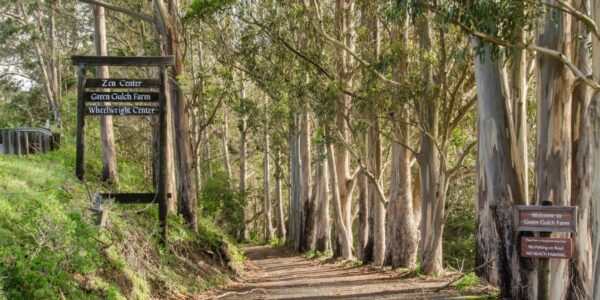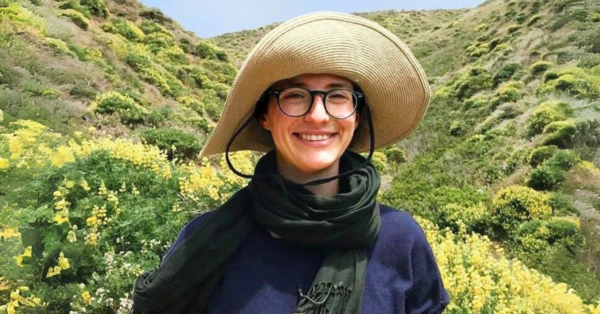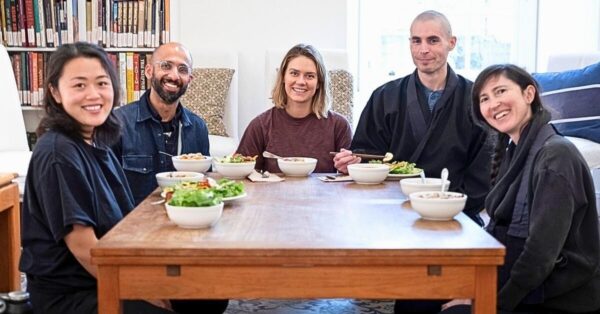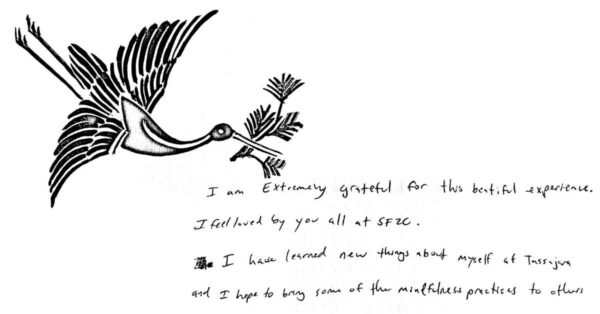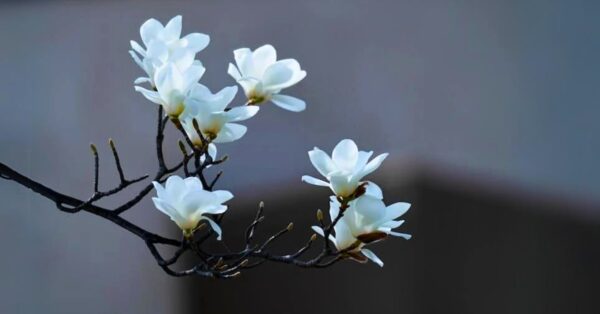by Lisa Marie Jansen, ERYT
In this post, yoga teacher and intuitive healer Lisa Jansen comments on her Yin beginning, the benefits she has experienced from this style of yoga, and why she is inspired to share it in combination with Zen teachings. Along with co-teacher Daiyu Judith Randall, Lisa offers Yin Yoga and Zen at City Center on Saturday, October 18, from 1 to 4:15 pm.
I have fond memories of my first Yin Yoga experience. I was about 32 years old—quite a while back—and I was studying with Sarah Powers. Because she is such an eloquent teacher in both the Yoga and Buddhist traditions, I was quite taken with her approach.
I had spent about 15 years prior to this practicing yoga in a more rigorous, ashtanga/flow style. I remember dropping into something unfamiliar in Sarah’s Yin class: stillness. “Oh wow, this is an option!” said my mind/body. The physical aspect of me was also challenged even though we never got on our feet.
I was inspired to continue including Yin Yoga in my home practice, eventually studying in depth with Sarah. I began teaching Friday evening Yin classes to my community after I completed a 10-day Yin Yoga teacher training intensive with Sarah. Mostly I was excited about the richness and opportunity to give my students balance. The Yin practice complimented the more traditional Hatha Yoga classes in a way that I felt was highly beneficial to the community of yogis I was working with.
Stillness, staying awhile, learning to be with “what is” are wonderful benefits of this Daoist form of yoga. Opening up the body in a deep way and relieving stiffness are other main benefits. Coming into the practice from a meditative perspective, Yin can be a great support in preparing to sit still.
What can you expect when practicing Yin Yoga?
- Holding passive postures, practice on the floor, with holds from 3-5 minutes.
- The postures themselves are aimed at preparing one to meditate.
Some Benefits of Yin Yoga:
- Calming and balancing for mind and body.
- Regulation of energy in the body.
- Increase of mobility in the body, especially the joints and hips.
- Better lubrication and protection of joints.
- More flexibility in joints and connective tissue.
- Release of fascia throughout the body.
- Help with TMJ and migraines.
- Deeper relaxation.
- A great coping tool for anxiety and stress.
- Ultimately better Yang practice, or more range of motion in any physical pursuit you have.
I find that students come to Yin Yoga for a variety of reasons. One simply is to increase and maintain flexibility. As one ages, flexibility in the joints decreases. Many people don’t seem to be too concerned about flexibility until they notice it is gone. Students who are stiffer, athletic, or cannot seem to shake a holding pattern in the body will also find their way to Yin Yoga, often finding it gives them deeper release in their bodies than any other form of bodywork.
I also find that Yin Yoga has increased in popularity due to our very fast-paced lifestyle. The intimate practice of Yin requires students to be ready to get intimate with the self—with feelings, sensations and emotions. These are things I have noticed can be easy to avoid in a brisker yoga practice.
Judith Randall and I will include teachings that are more specific to the topic of intimacy in this workshop. It’s here in our longer practice sessions that we have the opportunity to get real with ourselves. We are blessed to have been given the time and space to study these ancient practices. We come together and are able to drop in, one breath at at time. We learn to develop great awareness and intimacy, and ultimately free ourselves from our held conditions. Without covering anything up, running away or staying addicted to movement we can learn to be authentic, to feel deeply and to open to our own life situation.
I love our traditional ending of practice by saying “namaste.” Namaste—always remembering that the practice is for all beings; that as we do this work within our own being we become able to turn that light back onto another and another.
I look forward to meeting you, sitting with you and dropping into both Yin and Zen on Saturday, October 18th. I really do believe that incorporating a little of both will create a more well-rounded practice and version of the awesome you!
Namaste,
Lisa Marie, ERYT
__________
Visit the SFZC website for more information on the workshop Yin Yoga and Zen. Also, for more about Lisa and more of her writing, visit her Prema Yoga Healing blog.


